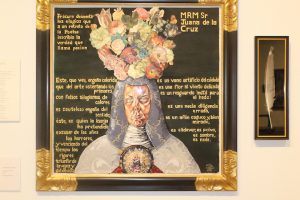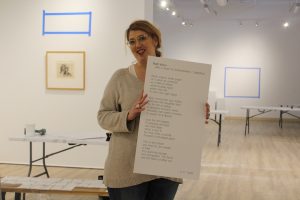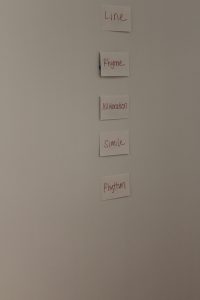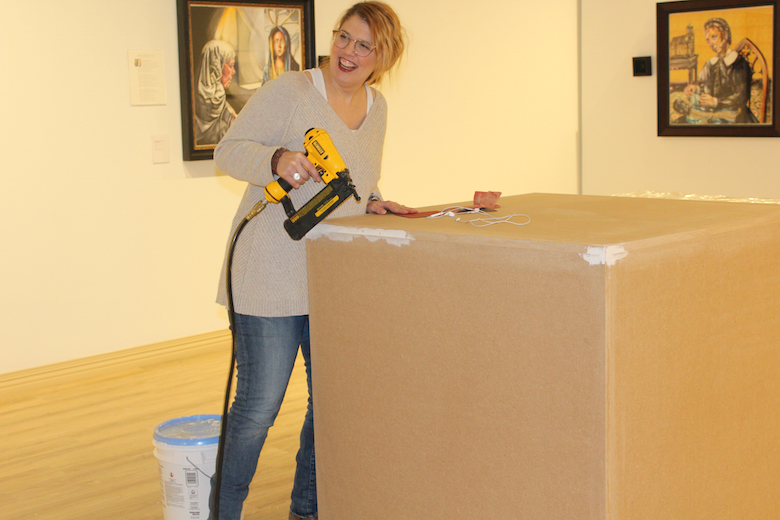Visit the two exhibitions opening Jan. 15 at Wilkes University’s Sordoni Art Gallery – Peasant War and Sacred Sisters – and you’ll never guess the hours of work that went into creating the experience. Preparing for the opening required much more than pounding in a few nails to hang pictures on walls. Readying the exhibit is a creative act. Heather Sincavage, assistant professor and director of the Sordoni Art Gallery, shared five things visitors might not know about what it takes to prepare an art exhibit for the public.
- Few exhibits come with a specific blueprint for the order in which works should be displayed. As gallery director, Sincavage makes those

One of the works in he Sacred Sisters exhibit. Each of artist Holly Trostle Bingham’s works includes a framed artifact referenced in the painting.
determinations. “I have to consider how we’re visually going to tell a story,” Sincavage says. She considers details like the theme of the works, color and whether the content of the work is dark or is more lighthearted in nature.
- The first placement of paintings and sculptures in the gallery may not be the final order of the exhibit that the public views on opening day. “I like to live with it for a bit,” Sincavage says. “I may end up saying, ‘This needs tweaking.’ ” That tweaking may involve changing the order and location of works.
- “It’s a lot of blue tape.” Blue painter’s tape – the kind that leaves no marks – is Sincavage’s best friend as she prepares an exhibit. In the Peasant War exhibit, which includes original poems by J.C. Todd written about each of artist Käthe Kollwitz’s etchings, blue tape was a placeholder for the poems in the days leading up to the exhibit’s opening. The tape, Sincavage says, helps her to visualize how it will finally appear.

Sordoni Art Gallery director Heather Sincavage displays one of the poems by J.C. Todd that will accompany the Peasant War exhibit.
- There’s nothing glamorous about the work it takes to prepare an exhibit for the public. The artist’s book that accompanies the Sacred Sisters exhibit required a large box to display it – larger than any the gallery had on hand. Sincavage wielded power tools to build a box that the gallery’s work-study students would paint in the days before the opening. “Hanging an exhibit is built on coffee, painter’s tape – and tears,” Sincavage jokes.
-

Words on the wall in the Sordoni Art Gallery indicate the elements that visitors can use in the “makers space” to create poems.
Part of Sincavage’s charge as gallery director is to develop programs that involve academic departments on campus in the Sordoni. Peasant Wars and Sacred Sisters will include a “makers space” developed in conjunction with Manuscript, the English Department’s literary magazine. Visitors to the gallery will have a chance to create their own haiku and engage in other kinds of word play.






